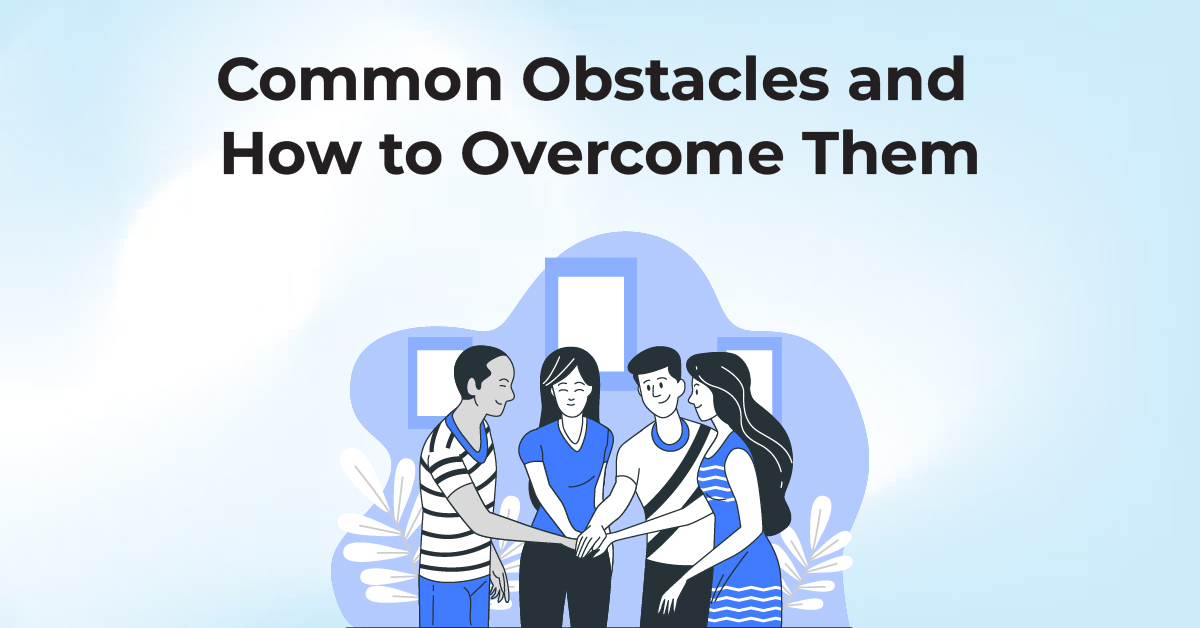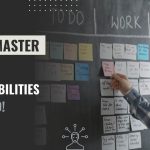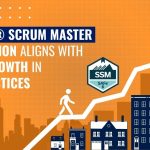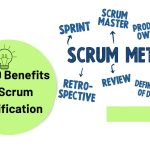Want a Scrum Master job with zero experience? Learn about the mindset companies are hiring for!
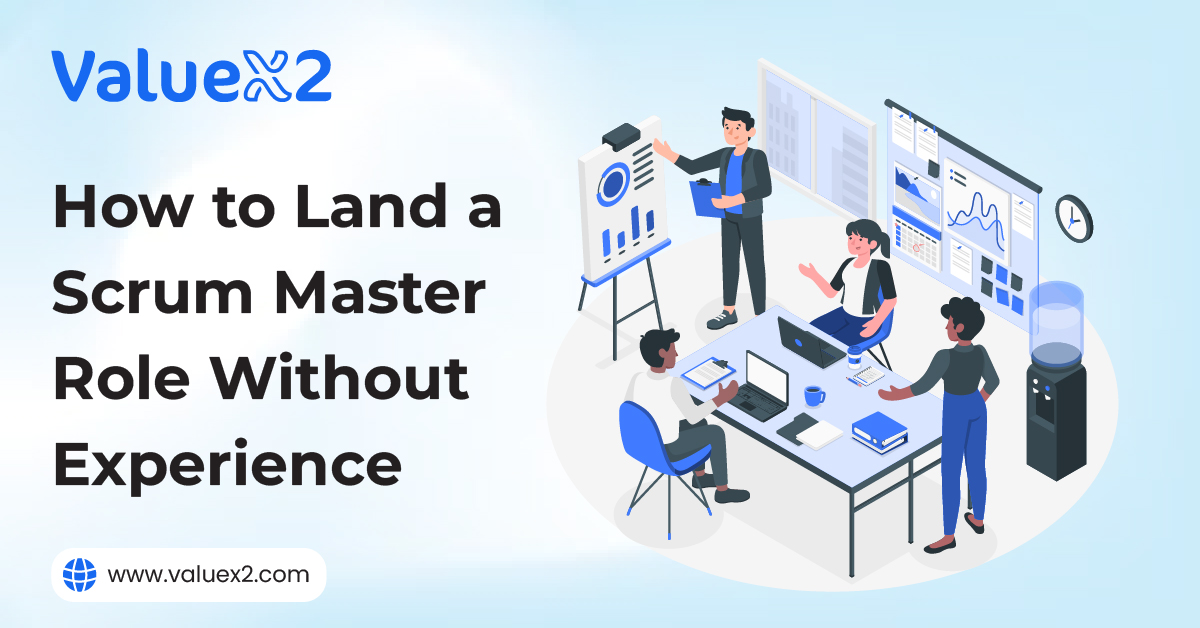 Today, we have decided to respond to the most frequently asked question: How do I become a Scrum Master without experience? After getting this question many times, we thought we would give five practical steps to lead you to become a Scrum Master without expertise.
Today, we have decided to respond to the most frequently asked question: How do I become a Scrum Master without experience? After getting this question many times, we thought we would give five practical steps to lead you to become a Scrum Master without expertise.
Here’s a guide written in non-technical language, so it is incredibly easy to follow. We are also going to let you in on a secret as to why an SSM course can be that one resource you need to get your new career off the ground.
1. Start Utilizing Your Current Job
Even if you work in another job, you can use your current job to acquire Scrum Master skills. Here are a few simple steps to do so:
Tell Your Boss:
When you are a certified Scrum Master, talk to your boss. Let him know that you are certified. Even though your company is not yet implementing agile practices, your boss might appreciate the new ways. This could open the door for introducing agile practices in your workplace.
Try Small Agile Practices:
- Ask to experiment with agile practices on your existing team. For example, you can:
- Have brief daily meetings (daily stand-ups).
- Start a final project meeting (retrospective) to talk about what went well and what didn’t and how to improve things in the future.
- Have a brief list of tasks (a backlog) and show how to work through them step by step.
Build Your Experience Organically
By taking the initiative, you get real experience. Although your work will not change immediately, you have already practiced the skills needed to be a successful Scrum Master.
Using your current work in this manner is sowing a seed. Those small things can grow into a strong sign of your ability to lead agile teams in no time.
2. Volunteer to Gain Hands-On Experience
If you possess no professional Agile experience, volunteer work is an excellent way to gain experience. It will develop a portfolio showing that you can apply agile techniques in practice.
Volunteer with Local Groups:
Many charities and small organizations need help to plan projects. Volunteer your skills as a Scrum Master. Here are a few ideas:
- Help a charity that needs support to plan events.
- Assist a small business in planning its work.
- Volunteer at schools or community centers with projects that must employ agile methods.
Learn by Doing:
While volunteering, you gain experience running meetings, organizing work, and solving issues. That is valuable experience and shows future employers that you can implement Agile in various settings.
Request a Recommendation:
After you support a small business or a non-profit, request a recommendation letter. You can add this letter to your resume. It proves that you have hands-on experience, even though you were not paid for it.
Maintain a Record of Your Work:
Account for what you did, what worked, and what challenges you overcame. These records will help you explain your experience during job interviews.
By volunteering, you build experience and confidence. It is a win-win: you help others and prepare yourself for your new career.
3. Find a Mentor in the Agile Community
A mentor can take you through the learning process of how to become a Scrum Master. They can share their experience and advice that spares you from making the same mistakes they did.
Join Online Communities:
Look for LinkedIn, Facebook, or Meetup groups focusing on agile approaches and Scrum Master expertise. There, you can find working individuals who are agile coaches or Scrum Masters.
Ask for Mentorship:
Find an agile coach or experienced Scrum Master. Ask whether they can mentor you. You can have regular online or offline meetups to see how you’re progressing and clarify questions.
The Benefit of Live Examples:
A mentor can demonstrate how they handle everyday issues. They might share real case studies or lead you through a sample project. This kind of advice is priceless and will shorten your learning curve.
Build a Relationship:
Stay in touch with your mentor and prove you are serious about learning. Their recommendations can lead to employment referrals and a more robust network in the agile community.
Mentorship is having a team coach. A good mentor will help you learn fast and not get caught in the usual traps.
4. Enhance Your Resume with Additional Certifications
In today’s competitive job market, you want to differentiate yourself. You can do that by adding additional certifications to your resume. Sometimes, this process is referred to as “stacking.”
A Step Above the Basic Certification
After becoming a Scrum Master, stack with another certification. For example, you can pursue courses in:
- Design Thinking: Learn how to solve problems with creative strategies.
- Agile Transformation: Discover how to transform the entire organization with agile principles.
- Machine Learning (if applicable to your business): Find out how new technology can improve agile projects.
The Power of Stacking
When you possess some different certifications, it can be seen that you’ve gone past the basics. It shows you’re eager to learn and learn more. One example is I have a coworker who obtained another Agile transformation certification and was hired between 30 and 45 days afterward.
SSM Course
An SSM course from ValueX2 can give you that additional push. Most candidates get certified and do not know what to do next. With ValueX2, you can get interview-ready and understand how to network with industry experts. We help you achieve a good starting point as you become part of the organization. We are a platform that will help you differentiate yourself from individuals with just a basic certification.
Not only does adding certifications pad your resume, but they also pad your knowledge. Recruiters want applicants who show a clear intention to learn and develop.
5. Implement Agile in Your Daily Life
Agile is not only for the workplace. You can implement agile practices in your daily life. This will help you learn faster and prove that you know agile principles.
Personal Projects
Use agile methods to plan a home renovation project, family event, or even vacation. Write down the work you need to do, create a schedule, and hold a “meeting” with yourself or your family to discuss progress.
Create a Personal Backlog
Put down your goals and tasks. This is your backlog. Read it once daily and update it when you’ve completed tasks or whenever new ideas come in.
Perform Daily Stand-Ups:
Even if it is just for your work, try to do a daily stand-up. Take a few minutes each day to review what you did yesterday, what you will do today, and any issues you are having trouble with.
Document Everything
Keep a simple journal of your Agile projects. Note what you tried, what worked, and what you learned. Your notebook will be helpful when you explain your experience in an interview.
Implementing Agile in your home illustrates that you live the Agile way. It provides confidence and lets you explain agile concepts more easily during job interviews.
Additional Tips and Most Common Challenges
Additional Tips
-
Be Proactive:
Please don’t wait for them to give you the job. Begin showcasing your Agile skills right away. Every little step you take is equivalent to a great experience down the lifeline.
-
Stay Up-to-Date:
Agile is constantly changing day by day. Stay ahead of the current trends by reading blogs, watching YouTube videos, and joining online forums. Being up-to-date makes you an attractive candidate.
Common Obstacles and How to Overcome Them
Challenge: No Agile Job Experience
Solution: Experiment with agile practices in your current job. Volunteer and apply personal projects to learn through experience.
Challenge: Feeling Overwhelmed by New Concepts
Solution: Break the learning process down into baby steps. Start with the basics and add one new concept at a time. Practice is essential.
Challenge: Building a Professional Network
Solution: Attend online communities and local gatherings. Connect with veteran Scrum Masters and agile coaches. Networking is a continuous process; be proactive and stay in touch.
Challenge: Standing Out in a Competitive Market
Solution: Overlap certificates on each other and build a robust portfolio. The ValueX2’s SSM training is an example of a course that can grant you that additional edge. It will teach you specific skills needed to thrive in your first days as a Scrum Master.
Knowing those challenges and taking decisive steps to overcome them, you can set yourself up for success.
Final Thoughts
It might seem impossible to start a Scrum Master career without experience, but it is possible. Use your current job to test agile practices, volunteer to work on projects, and use agile in your personal life. Network and learn from experienced mentors. Any little bit counts.
Spend time building your portfolio. Stack your certifications on top of one another to show that you are a serious professional. If you require that little extra, obtain a specialized course such as the SSM course by ValueX2. It will guide you through your first few months and can help you nail your job interviews.
Your journey to being a Scrum Master is a marathon, not a sprint. Learn daily, practice daily, and improve daily. With every agile practice, you are nearer to landing that dream job. Enjoy the journey, and remember that every meeting you facilitate and every project you work on brings you closer to success.
Thanks for reading this guide. We hope it serves you well on your path to being a successful Scrum Master. Keep focused, keep it simple, and always be willing to learn new things. Start small, be patient, and before you know it, you will see the results of your hard work.
Frequently Asked Questions (FAQs)
Q1: What is the role of a Scrum Master?
A: A Scrum Master helps teams to work together using agile techniques. They facilitate meetings, coordinate task lists, and ensure all individuals follow agile rules. They help teams to solve problems and stay focused.
Q2: How can I get experience if I have no work experience in Agile?
A: You can start by applying Agile to your current job, volunteering to work on local projects, and using personal projects to get experience with Agile. Document everything you do so you can show your experience later.
Q3: Do you require additional certifications?
A: Yes, additional certifications can differentiate your resume. For instance, design thinking or agile transformation courses demonstrate that you are serious about education and development. The ValueX2’s SSM course is an excellent means to improve your credentials.
Q4: What is the SAFe Scrum Master (SSM) course, and why should I take it?
A: The ValueX2 SSM course is a rigorous, 2-day training session showing you how to be a good Scrum Master. It offers interview-prep tips for interviews as well as fundamental issues faced. That is the competitive advantage that can put you ahead.
Q5: Are agile methods applicable in my own life?
A: Absolutely. Agile is a mindset you can use for any project. Try it on a home or community project. The more you use it, the easier it is to explain Agile in an interview.
Q6: How important is networking for a new Scrum Master?
A: Very significant. Joining an online community and networking with agile experts introduces you to others’ knowledge and makes you visible to possible employers. A mentor will guide you and even give you a job offer.

Bhavna is an Agile Coach and Consultant with over a decade of experience in advisory, corporate finance, IT assurance, and operations at Big 4 and within the industry in the UK and India. She has recently been the CEO of a start-up where she implemented agile practices within HR, Marketing, and Product teams.
She is also a SAFe® Practice Consultant (SPC) and authorized instructor for ICAgile Agility in HR (ICP-AHR), Agility in Marketing (ICP-MKG), and Business Agility Foundations (ICP – BAF) training courses. She provides training for agile transformation to corporate, public, and private batches, as well as consulting for enterprise agile transformation.

